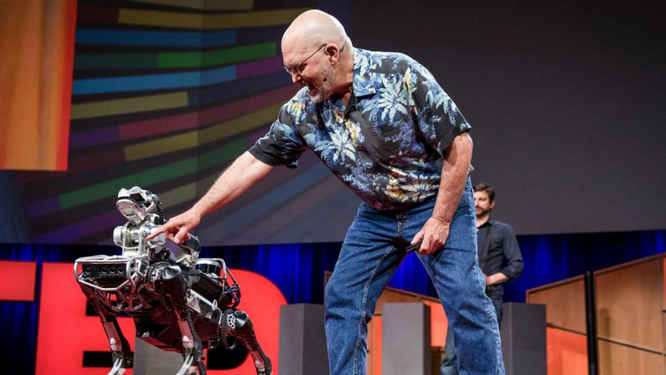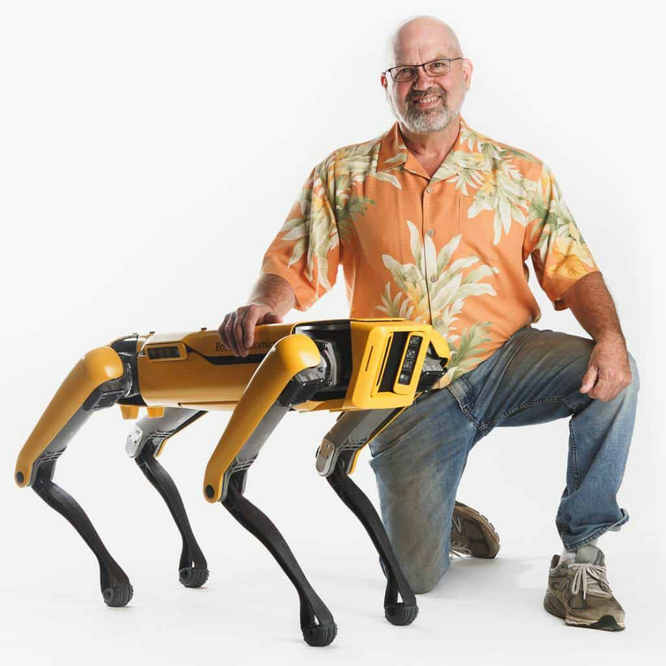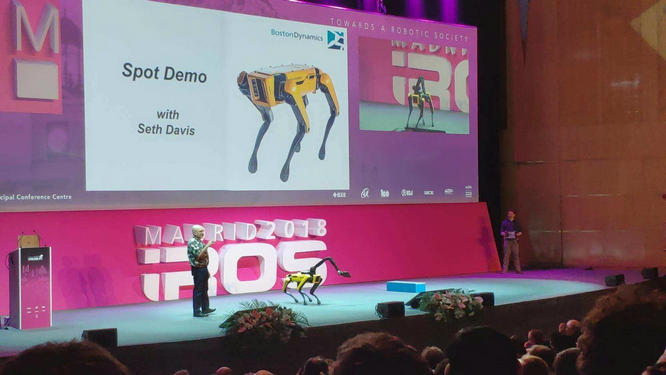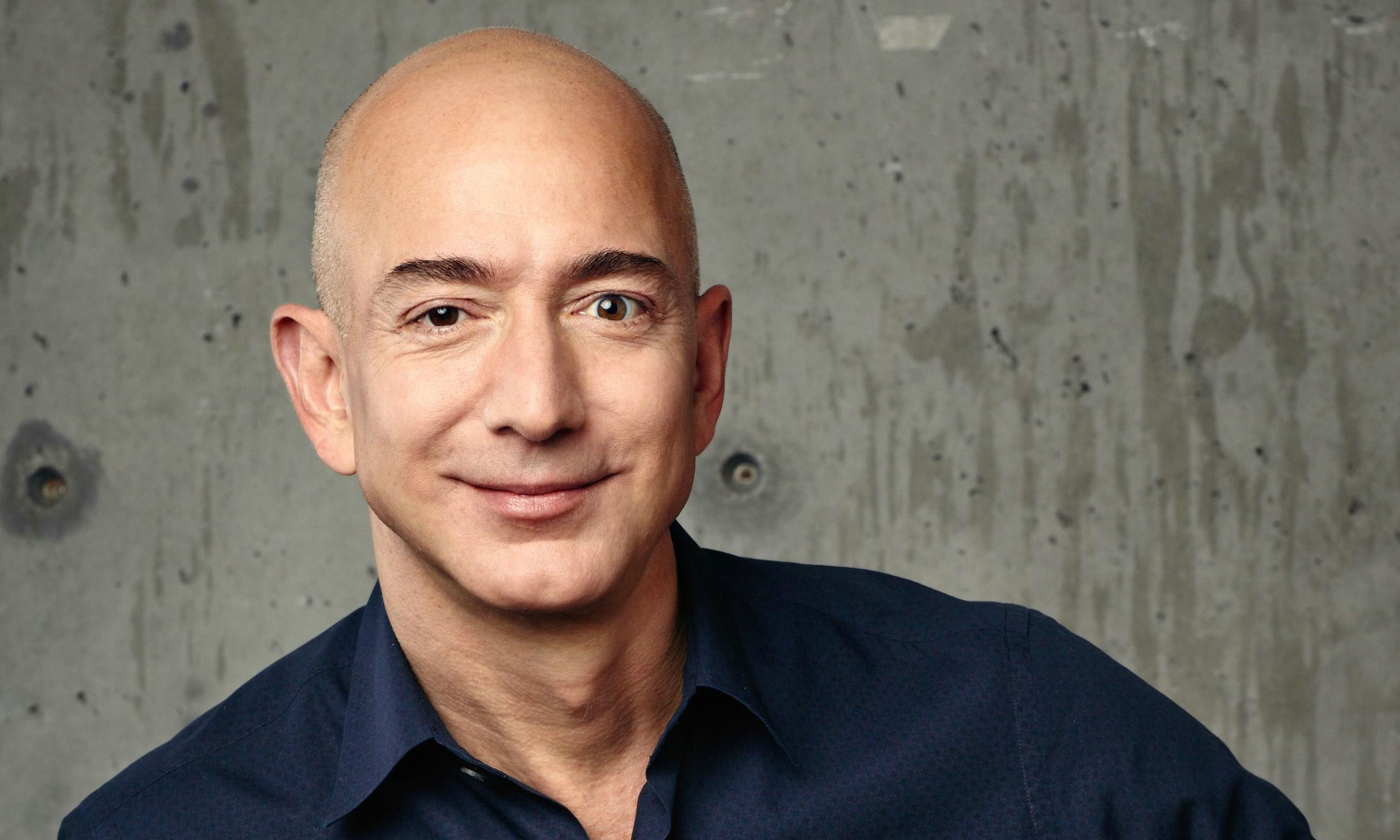In the vast universe of technology, there is such a navigator who, with endless curiosity and pioneering spirit, steers the sails of robotic technology and sails towards the unknown shore. Marc Raibert, as the executive director of the Boston Dynamics AI Institute, his story is an epic about dreams, courage and innovation, depicting a future vision of harmonious coexistence between machines and humans.

The Germination of Dreams: The Cross-domain Journey from CMU to MIT
Raibert's story begins at Carnegie Mellon University (CMU), where his strong interest in dynamic control is like a seed deeply implanted in his love for robots. Subsequently, in the laboratory at the Massachusetts Institute of Technology (MIT), this seed began to take root and sprout. His Leg Lab (Leg Laboratory) became the cradle of robot research, focusing on researching biologically inspired robot leg movements, and these early studies laid a solid foundation for the later quadruped robot Spot.
"Robots are not just machines; they are messengers exploring the boundaries of natural laws, life sciences and artificial intelligence."
This famous saying of Raibert reveals his profound understanding of robotic technology. In his view, every step of technological progress is both a tribute to the mysteries of nature and a verification of human creativity. By simulating the walking way of animals, Raibert and his team constantly challenge the design boundaries of traditional robots, trying to endow robots with a higher level of flexibility and autonomy.

From the "jump-to-fame" jumping robot to the revolution of walking
In the Leg Lab, Raibert led the team to create robots that can jump, and they leap nimbly in the laboratory, as if foreshadowing the flexibility and freedom of future robots. These seemingly simple jumping experiments are actually extreme tests of dynamic balance control, laying a theoretical and practical foundation for the later walking robot technology. The work of this period not only demonstrated the technical strength of Raibert's team, but also inspired the public's unlimited reverie about robotic technology.
The Persistence and Challenges Behind Innovation
Raibert's exploration path is not all roses. Shortage of funds, technical bottlenecks, external doubts... Each challenge is as heavy as a mountain. However, it is precisely these adversities that have forged Raibert's indomitable spirit. He often says, "True innovation often happens outside the comfort zone." It is this dedication to innovation that allows him to find the key to success in countless failures.
From Theory to Practice: The Commercial Turning Point of Robotic Technology
Before the birth of the Spot quadruped robot, Raibert's far-sightedness had already promoted his research results to gradually step out of the laboratory and into the market. In 1992, he founded Boston Dynamics, which was a crucial step for him to transform scientific research achievements into real productive forces. In the early days of the company's establishment, although it mainly served national defense projects, Raibert always held the vision of making robotic technology benefit the public, and this vision was finally realized in the launch of landmark products such as Spot.

Our goal is to create intelligent machines that can understand the world, interact with it and assist humanity.
This sentence of Raibert's is not only a concise summary of the research direction of Boston Dynamics, but also a soulful confession of his ultimate pursuit in robot technology. Under his leadership, every breakthrough invention of Boston Dynamics is not only an innovation in mechanical structure, but also a profound exploration of intelligence, adaptability and autonomy.
The wonderful adventure of Spot: The leap from the laboratory to the real world
When it comes to Boston Dynamics, the quadruped robot named Spot that everyone knows. From toddling in the laboratory at the beginning to performing various tasks around the world later, Spot seems to be the physical incarnation of Raibert's concept. Its figures in construction site inspections, disaster site search and rescue, and even in artistic performances not only show the infinite possibilities of robot technology, but also confirm the foresight of Raibert's view that "robots are human partners".

Atlas: The robot Olympics that challenges the physical limit
If Spot is the representative of pragmatism, then Atlas is Raibert's interpretation of the ideal form of future robots. This highly flexible humanoid robot can walk, jump and even complete gymnastic movements freely in complex environments, refreshing people's cognitive boundaries of robot capabilities time and time again. Each progress of Atlas is a vivid practice of Raibert's concept that "robots should have human-like intelligence and physical coordination".
From academia to industry: Building an ecosystem of intelligent robots
Raibert knows well that to achieve a leap in robot technology, the efforts of a single company alone are far from enough. Therefore, he promoted the establishment of the Boston Dynamics AI Institute, aiming to assemble the world's top scientists and engineers to jointly conquer the core problems of robot technology. Through interdisciplinary cooperation and an open research environment, this institution is gradually building a robot ecosystem integrating education, research and development and application, injecting a continuous stream of innovative power into the industry.
Ethics and responsibility: The compass of technological progress
While pursuing technological excellence, Raibert also does not forget to remind the industry to pay attention to the importance of ethics. He believes that "as the capabilities of robots increase day by day, we must ensure that their development is beneficial to society and that ethical considerations are embedded at the beginning of the design." While promoting technological progress, Boston Dynamics is also actively involved in formulating industry standards and ethical guidelines to ensure that the path of technological development is both fast and stable.
Conclusion: The future has come, dancing with Marc Raibert
Marc Raibert's journey is a magnificent journey about exploring the unknown and shaping the future. With wisdom and passion, he has left a deep mark in the field of robots and led us towards a more intelligent and harmonious world. In this process, every miracle born from the Boston Dynamics AI Institute is the best annotation to Raibert's vision - in this new era of machines and humans dancing together, innovation and responsibility go hand in hand, dreams and reality are intertwined, jointly drawing an attractive future picture.

